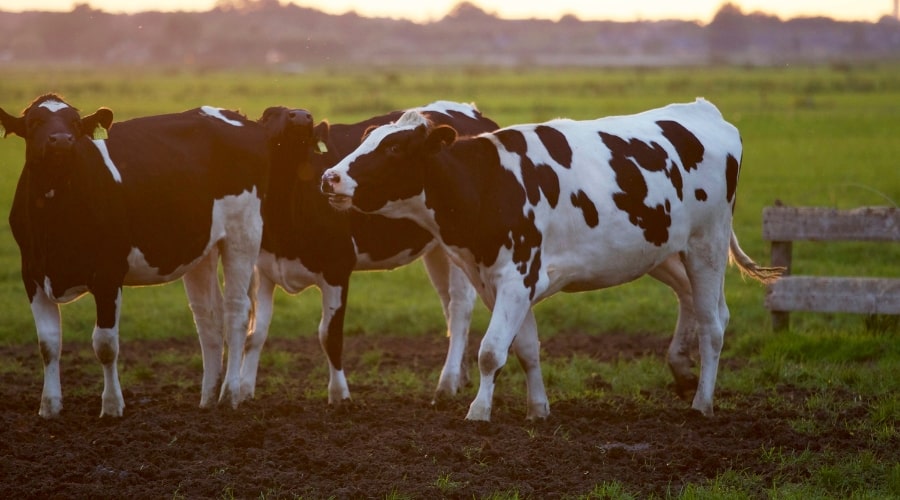Selecting the right dairy breed is a critical decision that impacts milk production, management, and overall profitability. If you’re facing difficulty choosing a suitable breed, focusing on these key factors will help.
Milk Production and Quality
Begin by understanding your milk production goals. Breeds like Holstein are known for high milk yield but may require more feed. Jerseys, on the other hand, produce less milk but with higher butterfat content, making them ideal for cream or cheese production.
Research the average milk yield of each breed and its suitability for your market. If your target customers prefer organic or high-fat dairy products, breeds like Guernsey or Brown Swiss may be more appropriate. Match your choice to the specific demands of your operation and customer base.
Climate and Environmental Adaptability
Consider how well a breed adapts to your local climate. Holsteins may struggle in extreme heat, while Jerseys and Zebu crossbreeds perform well in tropical areas. Select a breed that thrives in your region to reduce stress on the animals and minimize health issues.
Evaluate the quality of available pasture and water resources. Some breeds are more resilient in low-nutrition environments. Indigenous breeds may be better suited for areas with limited resources.
Feeding Requirements and Efficiency
Different breeds have varying feed conversion rates. Holsteins convert feed into milk efficiently but require higher-quality feed. Jerseys consume less feed due to their smaller size, making them a cost-effective choice for smaller farms.
Assess the cost and availability of feed in your region. Breeds that rely heavily on expensive supplements may increase your operational costs. Local breeds might be better for farms with limited feed resources.
Health and Disease Resistance
Health resilience is an important consideration. Some breeds are more prone to diseases, which can increase veterinary costs. Jerseys and indigenous breeds often show better resistance to local diseases compared to exotic breeds.
Ask about common health issues associated with the breed. Ensure the animals you purchase are vaccinated and come from reputable breeders. Keep in mind that healthier breeds lower overall maintenance costs and improve productivity.
Reproductive Efficiency
Reproductive traits like calving ease and fertility rates vary across breeds. Jerseys and Ayrshires are known for their reproductive efficiency and ease of calving. Breeds with higher fertility rates reduce the time between calving cycles, ensuring consistent milk production.
Consider the breed’s compatibility with artificial insemination if you plan to use it. Some breeds respond better to these methods, improving herd genetics and milk output.
Longevity and Lifecycle Productivity
Choose breeds with a longer productive lifespan to reduce replacement costs. Jerseys and Brown Swiss are known for their longevity, while Holsteins typically have shorter lifespans. A breed with a longer productive period gives you better returns on investment over time.
Track the average number of lactation cycles for each breed. A higher number of cycles means more consistent milk production before cows are culled.
Market and Economic Considerations
Analyze market demand for milk quality, quantity, and by-products. Breeds producing high-butterfat milk are ideal for specialized products like butter and cheese. Holsteins are better suited for markets requiring large quantities of liquid milk.
Account for initial purchase costs, feed expenses, and potential earnings. High-yield breeds may require larger investments upfront but provide better returns in intensive operations. Indigenous breeds often cost less to purchase and maintain.
Key Points to Remember When Choosing a Breed
- Milk yield: Match the breed’s output to your production goals.
- Climate adaptability: Choose breeds suited for local weather conditions.
- Feed efficiency: Evaluate feed requirements and conversion rates.
- Health resilience: Opt for breeds with strong resistance to common diseases.
- Reproductive traits: Consider fertility and calving ease.
- Lifecycle productivity: Look for breeds with longer productive lifespans.
- Market demands: Align breed selection with customer preferences and market needs.
Testing and Scaling
Start with a small herd to test the breed’s performance under your farm conditions. Monitor milk yield, health, and feeding efficiency for several months. Use this data to confirm whether the breed meets your expectations before scaling up.
Choosing the right breed ensures a strong foundation for your dairy farm. Focus on aligning breed characteristics with your goals, resources, and market to maximize success.


